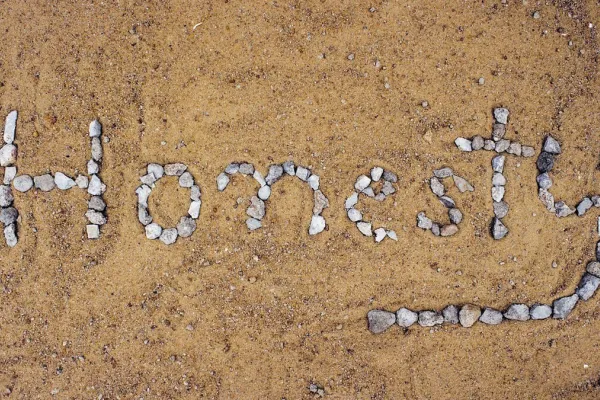 Details
Details
How do you create evergreen content? What can evergreen content mean for your audience building? What is a Transaction Editor?
Dominik Grau, Chief Innovation Officer at Ebner Media explain how his company works with evergreen content.
Dominik Grau was a speaker at Native Advertising DAYS 2016 – sign up for notifications about the upcoming conference in 2017.
Below are highlights from the interview which have been slightly edited for clarity.
Use evergreen content to create content your audience want now and in the future
"Evergreen content is a very powerful format of content that's valid for a long time. When we talk about evergreen content at Ebner, we talk about content that might be alive for five years or even longer.
This is content that you write once, that you produce once and then use for a very long time. The format could be text, an evergreen video, an audio file or podcast. It could be an evergreen slideshow. It could be any kind of content that the audience wants on the platform that the audience is using. Evergreen in itself is not limited to one format. Rather it's a collection of different formats. It's a strategy. We call it the evergreen strategy because it's a principle you can apply to many formats.
Related: Dominik Grau: It's the Wild West for Native Ads
You can use evergreen content to create content that the audience wants not only today but also tomorrow or in a year. You should be creating evergreen content to be the definitive source, the single most important source of content, a specific topic that matters to your audience. Evergreen content helps you to be a trusted, relevant and sought after source of content."
"The Transaction Editor creates content that triggers transactions"
"The transaction editor is creating content that triggers transactions. So whenever a transaction editor, a TE, publishes content he knows exactly what kind of results he wants. A transaction as part of the TE and metrics system could be a lead -- that is you generate an address or an email -- a download, a sale or purchase or just a repetitional transaction -- when someone sees your brand but doesn't do anything other than seeing your content, so you become a relevant and well-reputed source."
The seven steps of an evergreen strategy
There are seven steps to follow one after the other. We [at Ebner] never skip one because we saw that whenever we did that, the strategy didn't work. There are seven steps now in 2016. It might be eight steps or ten steps next year because things change. There are new formats, new platforms, new audiences, new social networks. So it might be more steps next year, but today it's seven steps and we start at step 1.
Step 1: Audience
"In the persona step, we try to understand our audience. We do interviews, we visit people at home, we go to their companies, we call them. We really analyse as deeply as possible what the audience is doing with the content. We not only do that to see what they're doing, we also want to understand who we're not reaching with our content.
And I can tell you one secret: we have a magazine at our company, I won't tell you the name, but this magazine only reached 1% of the potential audience in Germany. 99% of that potential audience they did not reach. Evergreens now help them to grow their reach. So this is why we start with step 1: persona to really understand our audience and to really capture their essence and their world to understand how they use content and why they need specific forms of content."
Step 2: Keywords
"Step 2 is validating these results. We look into search engines, we look into social media look, we look into e-commerce such as Amazon which really is the world's fourth largest search engine. People search for content on Amazon, they search for products. It's a very powerful tool that actually no publisher or no native advertising company is using. And this leads us to a so-called evergreen content keyword universe that sometimes is up to 7,000 keywords. 7,000 potential topics for evergreens. This keyword universe will be turned into keyword topics. That is we group relevant topics with each other and sometimes we have a topic group of about 3,000 topics that now form the basis of our evergreen content plan."
Step 3: Schedule
"Step 3 is creating a schedule, because you have all your topics and you know what the personas are doing with your content and you know all the keywords, you can now create a daily plan, a weekly plan, maybe monthly or even a yearly plan. You have a plan for the next 365 days of content as long as it's not news. You know today what people will be looking for next year in November and you can create your content plan from that knowledge."
Step 4: Update
"Once you've done the other steps you update your content every 90 days. Once every three months we go into every evergreen that we published and we update it. It might be with a video, a photo, a quote, an infographic or a list. We just update the evergreen to keep it relevant, to keep it fresh, to engage the audience."
Step 5: Amplify
Every 45 days approximately we just the evergreen link on social media. We're doing this to make people aware of the content and so that they can help us create a more engaging and more active evergreen. Sometimes when we share a link, they will re-share it, maybe add comments, amplify the content and as such an evergreen suddenly becomes a very powerful collection of our own content and the readers' opinions."
Step 6: Repurpose
"Step 6 is a very important and complex step. We call it the minimum information unit (MIU) step. It's essentially one element of the evergreen. An evergreen is not only a long text it's a collection of many MIUs. That might be a paragraph, a quote that you can share on social media, a photo, a video within the article. The video might also be the video itself, the audio of the video, the transcribed text of the video, a slideshow and suddenly you have not only one long evergreen: You have a collection of maybe 10, 20 or 30 MIUs.
Then you create touch point metrics which are the channels you use to amplify the MIUs. The touchpoint metrics sometimes have dozens of channels and maybe 10 or 20 MIUs and this is a very powerful resource to maximise the reach of your evergreen content."
Step 7: Convert
"Now you have created the audience, now you know exactly what you're doing with your yearly plan and now you can convert people. It might be a lead, as I said, it might be a sale, it might be reputational, it might be any kind of goal that your TE, your transaction editor, has defined in the very beginning of that process."
"Helpful content is underrated"
"Helpful content we think is the most underrated, undervalued and underused powerful source of content. Not only for native and content marketing also for publishers. 50% of people don't really type in keywords, they type in questions. They type in all kinds of crazy and weird questions but also great questions and you can measure that. We use Searchmetrics.com. They helped us discover all the questions that people type in and google and we've built hundreds of questions.
Now we can use these questions to turn them into helpful content because people tell us what they want to know like: what is native advertising? If you look up in Google it's a very often used question. It's not only what is native advertising, how do I do it, what are best practices, how much does it cost, why do I need it? You can group these questions together to create the most helpful resource on evergreen content out there on the web. Evergreen content is something native advertising agencies, content marketers, publishers, bloggers and freelancers should be doing."

